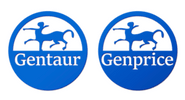Description
TLK2 Antibody | 63-398 | Gentaur UK, US & Europe Distribution
Host: Rabbit
Reactivity: Human, Mouse
Homology: N/A
Immunogen: This TLK2 antibody is generated from rabbits immunized with a KLH conjugated synthetic peptide between 141-171 amino acids from the Central region of human TLK2.
Research Area: Cell Cycle
Tested Application: WB
Application: For WB starting dilution is: 1:1000
Specificiy: N/A
Positive Control 1: N/A
Positive Control 2: N/A
Positive Control 3: N/A
Positive Control 4: N/A
Positive Control 5: N/A
Positive Control 6: N/A
Molecular Weight: 88 kDa
Validation: N/A
Isoform: N/A
Purification: This antibody is prepared by Saturated Ammonium Sulfate (SAS) precipitation followed by dialysis
Clonality: Polyclonal
Clone: N/A
Isotype: Rabbit Ig
Conjugate: Unconjugated
Physical State: Liquid
Buffer: Supplied in PBS with 0.09% (W/V) sodium azide.
Concentration: batch dependent
Storage Condition: Store at 4˚C for three months and -20˚C, stable for up to one year. As with all antibodies care should be taken to avoid repeated freeze thaw cycles. Antibodies should not be exposed to prolonged high temperatures.
Alternate Name: Serine/threonine-protein kinase tousled-like 2, HsHPK, PKU-alpha, Tousled-like kinase 2, TLK2
User Note: Optimal dilutions for each application to be determined by the researcher.
BACKGROUND: TLK2, a member of the Ser/Thr protein kinase family, is rapidly and transiently inhibited by phosphorylation following the generation of DNA double-stranded breaks during S-phase. This is cell cycle checkpoint and ATM-pathway dependent and appears to regulate processes involved in chromatin assembly. The TLK2 enzyme is cell-cycle regulated, with maximal activity in S-phase. It is inactivated by phosphorylation at Ser-750, potentially by CHK1. TLK2 heterodimerizes with TLK1. This nuclear protein is widely expressed, with presence in fetal placenta, liver, kidney, pancreas, heart and skeletal muscle tissues, and in several adult cell lines.






